| Content | The Rupert Neve Designs Portico II Master Bus Processor lets you enhance, reshape, and polish your sound to perfection. Whether you want to add finishing touches to your master bus, level out a stereo group, or add new life to mono sound sources, the Portico II Master Bus Processor gives you the compression, limiting, and stereo field manipulation you need. Featuring custom input and output transformers designed by Rupert Neve, the Portico II Master Bus Processor implements the same ultra-smooth Class A signal processing made famous by the 5088 console and the Portico II Channel, as well as 72V topology, which gives it enormous headroom while allowing it to integrate seamlessly with virtually any system. If you’re serious about your sound, then it’s time to ask your Sales Engineer about the Rupert Neve Designs Portico II Master Bus Processor!
Powerful and flexible compression
Both channels of the Portico II Master Bus Processor feature one of Rupert Neve Designs’ most versatile compressors to date. Whether you want to add punch to your mix or smooth out your vocal subgroup, the Portico II Master Bus Processor has the compression you need. Controls for ratio, threshold, attack, release, blend, sidechain highpass filter, limiting, and makeup gain let you dial in the perfect dynamics quickly and easily. Use the two compressors independently, or instantly link them with the push of a button. Variable Silk Red/Blue Texture controls let you add classic Neve harmonic warmth; while a blend control lets you dial in the dry signal for instant parallel processing, so you can get all of the compression you want without losing transients. In addition, the Portico II Master Bus Processor gives you a choice of either vintage-flavored feed-back or modern-sounding feed-forward compression modes.
Transparent, musical limiter that’s effortless to use
Often overlooked at first glance, the Portico II Master Bus Processor’s 1-knob limiter is a powerful, flexible, and remarkably easy-to-use tool that lets you get the most out of the Portico II Master Bus Processor’s compression section. Rupert Neve Designs’ Adaptive Release Technology gives this limiter its unique ability to grab onto fast transients, without smothering the rest of the signal. Plus, you have the option to blend compressed and dry signals together for parallel processing that maintains natural-sounding dynamics without clipping. This gracious behavior means you can set it and forget it, with the added security of knowing your masters will be free from clipping and broadcast-ready.
Sidechain inserts for creative ducking
Every dynamics processor has a sidechain circuit that examines the signal and determines how much the VCA will reduce gain — but not every unit provides access to its sidechain. In compressors without a separate sidechain input, your main input signal is, essentially, compressing itself. With compressors like the one in the RND Portico II Master Bus Processor, you can insert external processing on the sidechain — or introduce a different signal that determines the compression action on the main signal. It’s an incredibly useful feature that lets you, for instance, automatically duck a track to make space for another (very popular for that EDM mix pumping effect). Combined with the sidechain HP filter, it gives you an impressive amount of tonal versatility.
Amazing Stereo Field Editor
Although the Rupert Neve Designs Portico II Master Bus Processor functions wonderfully as a dual-mono processor, it really shines in stereo mode. That’s thanks to its unique Stereo Field Editor. The Stereo Field Editor uses advanced Mid/Side stereo manipulation techniques, allowing you to adjust your stereo bus’s width, depth, and ambience. Beyond widening your stereo image, the Portico II Master Bus Processor can actually bring center-panned instruments out in your mix. That makes the Portico II Master Bus Processor an invaluable tool for mastering, as well as defining the spread of your subgroups during mixdown.
The legend continues
Rupert Neve’s 80 Series consoles had a huge, punchy, and authoritative sound that defined the sound of ’70s rock. From London to New York to Los Angeles and beyond, top studios were installing Neve boards as fast as they could. By 1977, with the introduction of the NECAM automation system, 80 Series boards were the main component of the success formula for any recording studio with world-class aspirations. Mr. Neve’s current company, Rupert Neve Designs, continues to advance the state of the art with cutting-edge products that sound incredible and intelligently address the challenges of the digital age. With your Rupert Neve Designs Portico II Master Bus Processor from Sweetwater, the legend continues.
Rupert Neve Designs Portico II Master Bus Processor Features:
- Powerful 2-channel compressor/limiter/stereo field manipulator
- Custom input and output transformers designed by Rupert Neve
- Full compression sections for both channels, including attack, release, ratio, and threshold controls
- Sidechain inserts and highpass filters for both compressors
- Feed-back/Feed-forward switch lets you select between vintage-style and modern compression modes
- Silk Texture control with Red/Blue modes for classic Neve harmonic warmth
- Blend controls allow you to mix dry signal back into your compression, preserving transients while adding punch
- Simple and highly musical 1-knob limiter with Adaptive Release Technology allows for brickwall limiting that doesn’t distort or affect signal under the threshold
- Stereo Field Editor section includes independent level and EQ for width and depth, allowing you to dial in the perfect stereo field
| Simple and elegant, the 5211 is the natural evolution of what is arguably the most famous gear in audio recording history: Rupert Neve’s microphone preamps.
With two channels of the classic tone you know and love, 72dB of gain, sweepable high-pass filters for precise control, and the power of Mr. Rupert Neve’s dual-tap transformers with variable Silk saturation, the 5211 delivers a versatile, flattering, and uncompromising front end for any signal path. In short, it’s everything a mic preamp should be.
What is Silk?
One of the key features of the 5211 is the Silk / Texture control. The Silk circuit was initially developed for the original Portico series mic preamplifiers, and was only a single switch – on or off – that added a specified amount of musical, pleasing harmonic saturation to the unit’s output stage.
Taking this concept one step further, the Texture knob is designed to adjust the actual amount of harmonic content from the source material.
So how does it work? By reducing negative feedback across the output transformer and adjusting this feedback’s frequency response, the Silk / Texture circuit provides the sweet, musical saturation found in Rupert’s legendary vintage designs – but with complete & precise control over the amount of classic tone you want. And when the level is driven to the edge of its headroom, the Silk effect is multiplied.
Why a -6dB Output?
Complementing the Silk circuit is the custom-designed output transformer from the renowned Shelford Channel, which uses Rupert Neve Designs’ unique dual-tap output topology. This offers both full-headroom (+26dBu) and -6dB outputs, allowing the engineer to drive the unit fully into classic transformer saturation without clipping converters and other devices later in the chain.
Unlike the Shelford Channel, which uses a mic input transformer for a more vintage topology, the 5211’s input is fully transformerless, maximizing signal clarity direct from the microphone. Combined with the more extreme saturation from both variable Silk and the custom output transformer’s lower-headroom tap, the 5211 is capable of producing tones ranging from thick & warm to breathtakingly delicate & clear. It’s the best of old and new alike.
MAXIMUM INPUT LEVEL
@ 1 kHz: +26 dBu
NOISE
- Un-weighted, 22 Hz - 22 kHz, 150 Ohm input termination
- Line Out (Unity Gain): -104 dBV, -101.9 dBu
- -6 dB Line Out (Unity Gain): -109 dBV, -107 dBu
- Line Out (+30 dB Gain): -98 dBV, -96 dBu
- Line Out (+66 dB Gain): -66 dBV, -64 dBu
EQUIVALENT INPUT NOISE (EIN)
-128 dBV, -126 dBu
FREQUENCY RESPONSE
-0.2 dB at 10Hz, -2.9 dB at 120kHz
MAXIMUM OUTPUT LEVEL
- 1 kHz: +26.5 dBu
- 20 Hz to 30kHz +26 dBu
TOTAL HARMONIC DISTORTION AND NOISE (WITHOUT SILK)
- 1 kHz, +20 dBu O/P level, no load 0.0015%, typical
- 20 Hz, +20 dBu O/P level, no load less than 0.02%, typical
TOTAL HARMONIC DISTORTION AND NOISE (WITH SILK ENGAGED)
- TEXTURE @ min, 100 Hz, +20 dBu O/P level, no load: 0.03%, mostly 3rd harmonic
- TEXTURE @ max, 100 Hz, +20 dBu O/P level, no load: 1.5%, mostly 2nd harmonic
POWER CONSUMPTION
35 W (Max)'
PRODUCT DIMENSIONS
19” W x 1.75” H x 7 ⅝” D
SHIPPING WEIGHT
11 lbs. (5 kg)
SHIPPING DIMENSIONS
23” W x 15” D x 7” H (58.4cm W x 38.1cm D x 17.8cm H) | Packed with ultra-fast, rock-solid performance, the Behringer S32 32-channel digital snake system bridges the gap between your band, your FOH engineer, and your audience. With the S32, you get 32 remote-controllable Midas-designed preamps and 16 analog, servo-balanced XLR returns at the stage end, and it's all piped through a single, convenient Cat 5e cable, thanks to integrated SuperMac technology from Klark Teknik. In other words: no more bulky analog snake! So step up to the digital age — order your Behringer S32 32-channel digital snake system from Sweetwater today!
AES50 networking capability provides compatibility with many digital mixers
When Behringer first developed their S32 digital snake system, they intended it to go hand-in-hand with their powerful X32 digital mixing system. But limiting such a convenient and affordable digital snake to the X32 alone would have been a shame, which is why Behringer designed it around the strict guidelines established by Klark Teknik. The result is an affordable digital snake that's completely compatible with any digital console that sports an AES50 digital Ethernet connection. So if you're running a Midas or Behringer digital mixing board, if it's got an AES50 Ethernet port on it, if you've got an S32 digital snake, you're never more than a single connection away from your stage box.
Remote-controllable preamps make setup fast, easy, and painless
Even if you try to get a jog in every day, no one likes having to run up to the stage every time you have to make an adjustment to your stage box. Thanks to the Behringer S32 digital snake system's remote-controllable preamp design, those back-and-forth cross-venue dashes are a thing of the past. Using the Klark Teknik SuperMAC protocol, your S32 will show up in your digital mixer's OS, giving you the control you need over your pres, right from the front of house position. And by the way, these preamps are the exact same high-quality Midas-designed preamps found in the X32 console, so you know you're getting quality sound with low noise and tons of headroom.
Total integration with Behringer's P-16 personal monitoring system
Streamlined, affordable, and super-easy-to-use, everyone's raving about Behringer's Powerplay P16 personal monitoring systems. When you add a Behringer S32 digital snake system to your PA rig, you're not just getting a great set of remote-controllable preamps and ditching tons of bulky cable, you're ready to add an advanced personal monitoring system directly inline with the rig you already have. That's because your S32 digital snake comes equipped with Ultranet connectivity, which provides your Powerplay P16-M monitor controllers with a digital split straight from the stage box.
Behringer S32 32-channel Digital Snake System Features:
- Simple, flexible, and affordable digital snake system that works with any AES50 network-ready digital console
- 32 x fully programmable and remote-controllable Midas-designed mic preamps give you exceptional sound, right from the stage
- 16 x analog, servo-balanced XLR outputs let you send complete monitor mixes to the stage
- AES50 network ports featuring Klark Teknik SuperMac technology, providing you with ultra-low latency digital audio that's in-ear compatible
- Up to 328' of networking capability via a single lightweight CAT-5e cable (not included)
- Dual AES50 ports let you cascade multiple S32 units, without a merger or a router
- Precise LED metering plus 7-segment displays let you keep a close eye on your levels
- Ultranet connectivity for Behringer's Powerplay P16 Personal Monitoring System is perfect for In-ear applications
- Dual ADAT outputs for use in splitter mode and stand-alone digital multicore applications
- MIDI In/Out for bi-directional communication between FOH console and on-stage MIDI devices
- USB connector for system updates via PC
- Planet Earth switching power supply for maximum flexibility, noise-free audio, superior transient response plus low power consumption for energy saving
- Durable yet compact, all-steel 3U rack-mount chassis provides flexible mounting
|
NAIM UNITI NOVA ALL-IN-ONE MUSIC PLAYER
Uniti Nova is proof that an all-in-one player can deliver audiophile quality. Whichever source you choose, your music will be transformed into a stunning sonic experience. The reference player in the range, Uniti Nova has been configured to offer the very best solution that we can implement in a single-box, compact enclosure. All the available space has been used to provide 80 watts per channel of Class A/B amplification capable of driving the most demanding loudspeakers – detail and depth you’ll hear in every note, riff and chorus.
Uniti Nova really lives up to its name with some outstanding new technology which really sets it apart from the rest of the range. Its circuitry features the highest quality discrete components, a massive toroidal transformer for an exceptional sound, superior isolation, Naim's new signature volume control, more inputs than you can shake a stick at and an 80 watt power per channel power amplifier to boot. Uniti Nova is as good as an all-in-one player can get.
Specifications
Connectivity
Audio Inputs
2 x Optical TOSLink (up to 24bit/96kHz)
2 x Coaxial RCA (up to 24bit/192kHz, DoP 64Fs)
1 x BNC (up to 192kHz, DoP 62Fs)
1 x HDMI ARC
2 x RCA
2 x 5-pin DIN
2 x USB Type A socket (front and rear)
SD Card
Audio Outputs
1 x Stereo power amplifier
1 x RCA sub/pre output
1 x 3.5mm headphone jack
Amplifier Output: 80 W per channel into 8 ohm
Dimensions (HWD): 95mm x 432mm x 265mm
Weight: 13 kg
| Mu-so 2nd Generation is the successor to the multiple award-winning Mu-so wireless music system, re-engineered for class-leading performance, functionality, and usability by Naim's experts in Salisbury, England.
Combining Naim's 45 years of hi-fi mastery with the very latest music-streaming technology and premium design quality, this is the ultimate single-box system you and your music deserve. From up to 32bit high-resolution streaming to multiroom music to HDMI TV sound; you’ve never heard it so good from an all-in-one wireless system.
The all-new multicore Digital Signal Processor (DSP) drives higher performance, providing 2000 MIPS (Million Instructions Per Second) compared to the original Mu-so’s single-core, 150MIPS DSP.
Naim has also created a new limiter algorithm that keeps each of Mu-so 2nd Generation’s speaker drivers’ movement under control when at high volume levels. The new limiter, by design; is only active at extreme volume levels, and helps to retain the music’s clarity and increase long-term reliability.
Premium aluminum casing, in a new burnished grey finish.
It may look similar outside, but inside Mu-so 2nd Generation, the majority of components have been upgraded to improve performance.
The cabinet design has been re-engineered to create 13% more internal volume, enabling bigger, better bass. Both the cabinet bracing and baffle molding have been redesigned for improved rigidity, which suppresses and controls vibrations.
The distinctive heat-sink fins are now more compact, while still being ultra-effective, and continuing to feature Naim patented technology that discreetly incorporates the Wi-Fi antenna.
Specifications
Audio Inputs
HDMI: ARC in with CEC
Streaming: Apple AirPlay 2, Chromecast Built-in, UPnP, Spotify® Connect, TIDAL, Roon Ready, Bluetooth, Internet Radio
Analog input: 3.5mm Jack
USB: USB2 (Type A connector)
Digital (S/PDIF): Optical S/PDIF up to 96 kHz
Connectivity
Multiroom: Sync up to five Naim streaming products and control via the Naim App
Network: Ethernet (10/100Mbps), Wi-Fi (802.11a/b/g/n/ac), BLE v4.2
Formats
Internet radio formats: Windows Media-formatted content, MP3, ACC, Ogg Vorbis streams and MMS
Internet radio provider: vTuner Premium 5*
Audio formats
WAV, FLAC and AIFF – up to 24bit/384kHz
ALAC (Apple Lossless) – up to 24bit/384kHz
MP3 – up to 48kHz, 320kbit (16 bit)
AAC – up to 48kHz, 320kbit (16bit)
OGG and WMA – up to 48kHz (16bit)
DSD- 64 and 128Fs
Bluetooth - SBC, AAC
Note: Gapless playback supported on all formats
Warranty: Two years
Physical
Finishes: Burnished and anodized aluminum casework, CNC milled, bead blasted and anodized aluminum heatsinks, dual-tone grey and black fabric grill or light wood veneer and beige fabric grill.
Weight: 24.69 lb
Dimensions (HWD): 4.8" x 24.7" x 10.4"
Amplifier output: 450 W – (6 x 75 W)
Power Consumption
Typical use: 17 W
Standby mode: < 2 W
Deep sleep (No-network standby mode): < 0.5 W
Speaker system: Stereo 3-way; DSP-optimised vented box acoustic system
Supplied with: Dual-tone grey and black grill, remote control, power cord, reset pin-hole tool and information booklets | In addition to the 100% analog tape emulation circuitry – great for bringing out 3rd-order harmonics – the 542 incorporates a soft-clip circuit that tames the harshest sources and enhances 2nd-order harmonics, variable Silk Red & Blue for an infinite variety of transformer tones, and a blend control to dial in in the perfect amount of saturation.
Transformers Imitating Tape
Unlike digital emulations, the “True Tape” drive circuit works by feeding a custom-designed interstage transformer acting as a “record head”, which in turn is coupled to a correctly-equalized replay amplifier. As the voltage rises on the “record head”, saturation increases, and a soft clip circuit engages at higher levels to round off peak transients. The sound of the tape circuit can be further modified with selectable 15 / 30 IPS modes and a pre/post-tape blend control.
What is Silk?
In addition to the tape circuit, the continuously variable Texture control with Silk Red and Silk Blue modes provides a whole other level of control over the harmonic density and tonality of your tracks & mixes. The Silk Red mode accentuates transformer saturation in the high and high-mid frequencies to amplify the vibrant midrange harmonics associated with Rupert’s vintage equipment, while Silk Blue accentuates saturation of the lows and low-mids to add thickness and weight to any source – especially useful for “thin-sounding” tracks or mixes. Unlike EQ, these Silk & Texture controls saturate the output transformers, and add highly musical harmonics to the source material according to the amount of Texture applied.
Drive the 542 hard, choose your Silk flavor, and crank the Texture knob for a rich, saturated, vintage vibe – or disengage Silk entirely for a more purist, hi-fi tape effect. The choice is yours.
LINE AMP NOISE
- Measurements with tape circuit disengaged. Measured at Main Output, un-weighted, 20 Hz - 22 kHz, Input Terminated 40 Ohm.
- Unity Gain: Better than -100 dBV
FREQUENCY RESPONSE
- Measured at +10 dBu, trim at unity.
- Main Output: +/- 0.25 dB from 5 Hz to 60 kHz, -2 dB @ 120 kHz
MAXIMUM OUTPUT LEVEL
23.25 dBu
TOTAL HARMONIC DISTORTION AND NOISE
- @ 1 kHz, +20 dBu output level: Better than 0.002%
- @ 20 Hz, +20 dBu output level: 0.07% Typical (2nd and 3rd harmonic)
TAPE FX SPECIFICATIONS
NOISE
- Measured at Main Output, un-weighted, 20 Hz - 22 kHz, Input Terminated 40 Ohm.
- Saturation @ minimum: Better than -100 dBu
- Saturation @ maximum: Better than -100 dBu
FREQUENCY RESPONSE
- 15 IPS, Input @ -0 dBu: -3 dBu @ 28 kHz
- Saturation @ minimum: 0 dBu @ 10 Hz
- +5 dBu Peak @ 60 Hz Saturation @ maximum: -3 dBu @ 20 kHz
- -3 dBu @ 12.5 Hz
- +2.4 dBu Peak @ 60 Hz
- 30 IPS, Input @ -0 dBu: -3 dBu @ 120 kHz
- Saturation @ minimum: -3 dBu @ 10 Hz, +3.15 dBu Peak @ 125 Hz
- Saturation @ maximum: -3 dBu @ 100 kHz
- -3 dBu @ 12.5 Hz
- +1.3 dBu Peak @ 110 Hz
TOTAL HARMONIC DISTORTION AND NOISE
15 IPS
- Input @ -0 dBu: 0.4% @ 3 kHz to 1% @ 175 Hz typical Saturation @ minimum: Greater than 1% below 175 Hz typical
- Saturation @ maximum: 1% at 6 kHz typical, 0.3% @ 1 kHz to 3% @ 50 Hz typical
30 IPS
- Input @ -0 dBu: 1% at 1 kHz typical
- Saturation @ minimum: 0.6% @ 400 Hz to 5% @ 20 Hz typical
- Saturation @ maximum: 1.5% @ 20 kHz to 0.4% @ 1 kHz typical, 0.4% @ 1 kHz to 2% @ 50 Hz typical
POWER REQUIREMENTS
Supplied by 500 series rack with 110-125 mA @ +/- 16V DC |



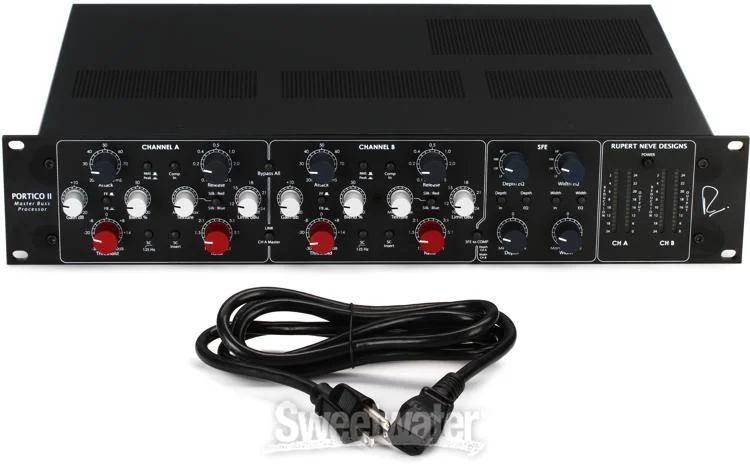


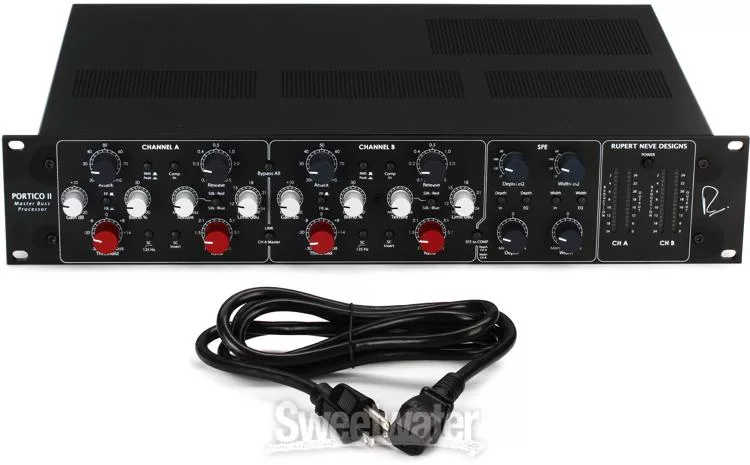






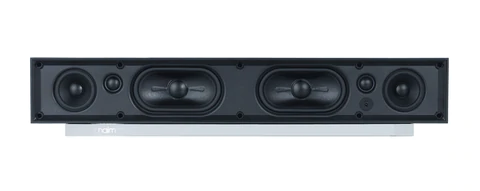

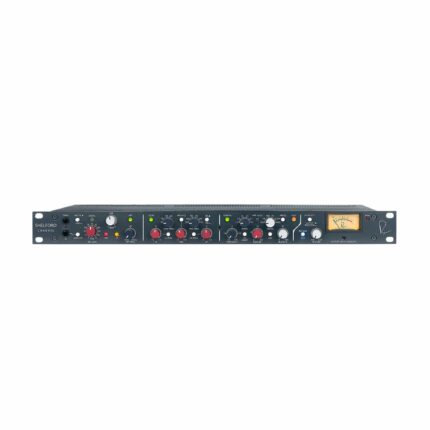
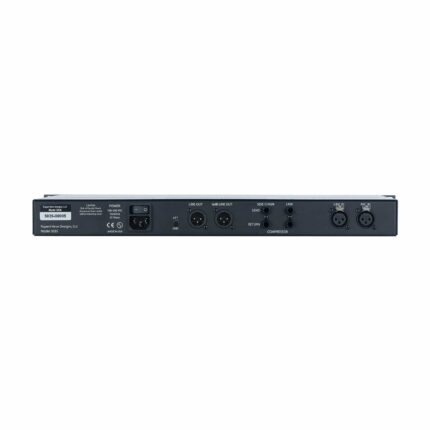








Reviews
There are no reviews yet.